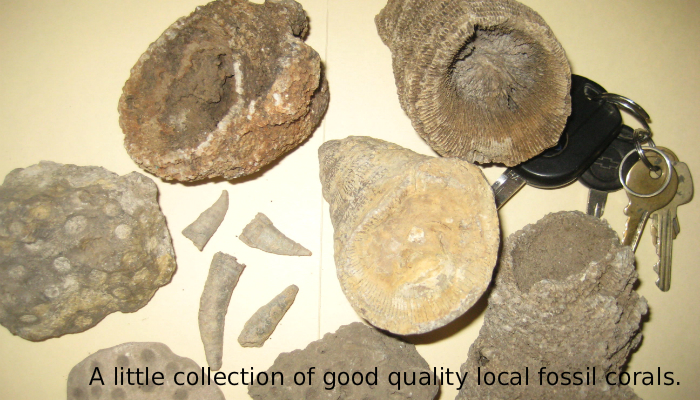Coralville Named for its Fossils

In the early 1830s, Swiss naturalist Jean de Charpentier lead Louis Agassiz on a tour through the Alps, proving to him that the mountain glaciers were previously much more extensive and flowed out onto the surrounding lowlands. Professor Agassiz quickly realized that much of northern Europe had been similarly glaciated and compared it to modern Greenland.
In correspondence and conversations with Americans, he also became convinced that northern North America had been similarly glaciated. He came to visit in 1846 and was soon employed by Harvard. He found his glacial premonition to be supported by vast amounts of evidence, and he became the person to invite to your college to promote this new and amazing concept, in part because he was also a fantastic lecturer.
For the 1866-67 academic year, the young University of Iowa had created a public lecture series, and Agassiz was among those invited. He arrived December 11, 1866, and his hosts took him on a tour to see local geology. Bedrock outcropped naturally along the Iowa River and their tour went upstream to a nearby little settlement, variously called Clarksville, or The Mills, or Coral Mills. It was a place where a dam had been built on the exposed bedrock, which powered a woolen mill, a paper mill, a saw mill, and a flour mill. While digging out a foundation for the flour mill, quality fossils were found, and the proprietor, Valentine Miller, recognizing what they were, had named his establishment Coral Mill.
So when Agassiz’ entourage arrived at Clarksville, there was a scramble to show him all the neat fossils that had been found there. He understood the big picture of what he was being shown, and at the last moment changed the theme of his public lecture from glaciation to coral reefs.
He wowed them! Built the story how this area had been part of a shallow warm sea, that the modern analogue is southern Florida and Cuba, that storms had broken off pieces of reef and flipped them over and this particular specimen has younger corals growing on the new topside, that… It was an altogether fascinating presentation based on hand specimens that he and they had just borrowed and picked up the day before.
The local folks were also delighted to learn that their village had a history and promptly set out to acknowledge it. Within a week after the lecture, a story in the Iowa City newspaper, The State Press, began thus: “NEW TOWN – A New town was born into this winter weather last week, up at the woolen mills, and was christened “Coralville.” This name was suggested by the fact…” And the storyline then wandered off into a flowery Victorian-style soliloquy. The village was officially incorporated as Coralville in 1873, with boundaries, a charter, a mayor, etc. and has been called Coralville ever since.
Fossil corals are still abundant today, and you will not harm the resource by collecting nice specimens. When local limestone is run through the rock crusher at the quarry, it sometimes breaks loose isolated horn corals from their softer matrix, and they can wind up more or less intact in stoned driveways and riprap layers. But the more delicate ones, with detail etched out (see photo) do not survive the crusher, and to find these you need to dig around places where they have been slowly eroded from their limey matrix, such as deep soil exposures over bedrock, or in a streambank.
So spend some time looking in likely locations such as creek beds, and you might find your own connections to our ancient heritage, maybe arrowheads from the hunter-gatherers who preceded us; or mastodons from the Ice Age; or corals from our ancient seas.
Tags: Coralville, fossils, Lon Drake

